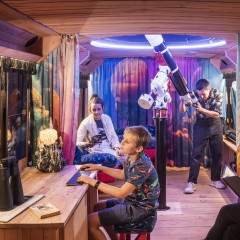Accessibility is vital to inclusion across all areas of society. This is especially true in activist spaces; yet these areas that are fighting for political and social changes are consistently falling short in providing accessibility.
Accessibility refers to the “design of products, devices, services, or environments for people with disabilities”, according to Disabled World. In practice, this simply means providing the means for people with different abilities to access aspects of the world. Accessibility should strive for all people to be able to access all things, regardless of their disabilities.
As DPAC have been outlining in their guest posts, disability is often forgotten and left behind in the eyes of policy makers. Disability rights activists have long been fighting for change in an inherently ableist society, where even the format of ‘legitimate activism’ lacks accessibility. Ableism, discrimination against individuals with disabilities, favours people without disabilities and contributes to disabled people being disregarded and oppressed.
We need to break the idea that dramatic physical action is the only way to protest. Physicality doesn’t prove passion. Online activism is often dismissed as ‘armchair activism’, with the insinuation that those who write tweets or sign a petition aren’t doing real work. This ignores the very real fact that some people simply can’t do the type of direct action that’s deemed legitimate - and participation in anything that furthers the cause is important.
The rise of online activism looks to herald a new focus on accessible activism. The ability to use social networking, online petitions and take part in online alternatives to physical protests is life-changing for activists with disabilities. We are the internet generation, who have the abilities and understanding to make real change through a mouse click, keyboard press and a computer screen. With the internet providing entertainment, communication and knowledge, how can it also be used to promote causes we care about?
What makes online activism accessible?
Accessibility settings are something many people won’t even consider looking at when they sign up to a social networking site. For those with visual impairments, the option to increase colour contrasts so text is easier to read or having the option to view image descriptions is invaluable.
Adjusting screen colour and font sizes, or magnifying the screen, are also vital for some people to be able to read websites like Facebook or Twitter. Screen readers and text-to-speech functions can be used to read information out loud, which can be useful for those with more severe visual impairments or blindness. These settings allow people to tailor their online experience to their needs and participate more fully in online discussions.
Beyond accessibility settings, the nature of online spaces that allow for people to contribute from their own home is crucial for people with disabilities. Leaving the house to join direct action, such as a protest or a march, can be very difficult or impossible for those with physical disabilities. Chronic fatigue can prevent people from being able to commit to a physically demanding march, whilst mental health conditions such as anxiety and agoraphobia can also hold people back from direct action.
Online versions of popular marches are beginning a hopeful trend of extending accessibility of events to those who can’t make it. The Women’s March in Washington in January 2017, protesting the inauguration of President Donald Trump, promoted an online march for disabled supporters who wanted to show their solidarity. This added disabled voices to the outcry of anger over Trump’s appointment, highlighting how online activism does make visible contributions.
Communication is key
Communication is aided by online messaging services and platforms that promote discussion and collaboration. Those whose disabilities affect their speech may find themselves patronised, talked over or ignored in face-to-face conversations. The impatience of some people without understanding of speech impairments contributes to the constant silencing of people with disabilities, who can’t finish their point without being interrupted or talked over. Online activism allows these people a platform to speak their mind without being belittled or hushed.
The voices of disabled people need to be listened to if any progress is to be made. People with anxiety and fears of public speaking can benefit from online communication, whilst written information also allows time for people to absorb information and understand it in their own terms; this could be useful for people with dyslexia or other learning disabilities.
A key benefit of online activism is the ability to form connections with other people with disabilities. The community of disability rights activists is vast, with many being brought together through reading a Twitter thread or retweeting a blog link. These connections form groups who push for further activism, strengthening the cause. The cause can be anything from disability rights and challenging government policies to feminism and LGBTQ+ liberation. Activism is always improved by bringing more passionate voices into the fold, which accessible activism enables.
Accessibility and intersectionality
Although this discussion is focused on accessibility for disabilities, accessibility for other demographics is important to consider too, particularly as these often intersect. Working class and low-income people may not have the financial means to travel to direct action events, like marches or talks; disabled working class people struggle even further due to the lack of accessibility in many travel options.
Practically, it may be difficult to travel alone or to navigate an area lacking in ramps, hearing aid loops or other forms of assistance. People may need regular breaks, a space to take regular medication, or need somewhere to sit after standing for long periods of time. Marches may not offer accessible routes or provisions for people to take a break or make alterations.
When these needs are considered alongside the financial restrictions many working class people with disabilities face, it’s easy to see why online activism can be much more accessible. However, it’s important to remember that even this requires access to a computer or phone with internet access, which not everyone is able to use regularly.
Why can direct action be ableist?
Voltairine de Cleyre, an anarchist and feminist writer, said that “every person who ever thought he had a right to assert, and went boldly and asserted it, himself, or jointly with others that shared his convictions, was a direct actionist.” Although this thinking suggests that all activists are therefore direct actionists by fighting for their convictions, the term has particularly come to be associated with immediately effective action such as boycotts, demonstrations and strikes.
The focus on “immediately effective” feeds into common assumptions that direct action is the best and most productive type of activism. In our society, productivity equals worthiness, often linking to ideas of disabled people being unproductive and therefore less worthy than those seen to be more productive. This is shown in how disabled people are often perceived in the press. Chancellor Philip Hammond suggested low productivity rates were partly due to disabled people in the workforce, whereas Paul Dodenhoff commented on the narratives consistently seen in newspapers that “demonized” disabled people as “work shy”. The fascination with the sense of identity that comes from productivity shown through employment disadvantages disabled people who cannot work, and those who find themselves struggling to find work due to the disabled employment gap (the employment rate for people with disabilities was 50.7% in January - March 2018, compared to 81.1% employment rate for people without disabilities, according to a House of Commons report) and lack of accessibility offered by employers.
These damaging practices and assumptions all feed into the inherent ableism of society, and the view of accessible activism as less effective and less worthy. We need to rewire these thoughts by legitimising online activism, and by making other types of activism more accessible.
The lack of accessibility provisions at events creates various difficulties for activists with disabilities, who often end up feeling like that place just doesn’t cater for them. Chairs, hearing aid loops, sign language interpreters, written information sheets (including braille and dyslexic-friendly colours), quiet spaces, stimming devices, ramps, accessible toilets, accessible parking, allowance for assistance dogs…the list goes on. Considering these provisions should be a priority for events organisers so people with disabilities feel comfortable attending. Feeling safe and knowing there are things in place for your needs is vital, particularly in activist spaces which can be overwhelming and exhausting.
If accessibility provisions are provided, these should be easily used by those who need them. If a ramp is only in place if someone is told to set it up, or a lift only accessible with a staff card, this isn’t true accessibility. Being reliant on others being around to help is unfair and reduces the autonomy of disabled people; accessibility needs to allow for autonomy.
All activism should be accessible
Direct action is often heralded as the most productive activism, and often led by activists without disabilities who overlook the need for accessible activism, in favour of ‘getting things done’. Activist rhetoric for various causes often ignores or stigmatises disabled activists, creating an unwelcoming place and restricting the accessibility of these spaces.
Online activism needs to be seen as legitimate and worthy. Activists of all abilities should utilise online spaces to spread their message and participate in activism in whichever ways they’re able to. It’s not enough to make online activism accessible: all activism needs to be accessible. Make marches, protests and talks accessible, and make it a priority. Help your friends out, particularly if you don’t have disabilities yourself, and ask them what they want you to do. Be an ally, provide crucial transport, moral support and solidarity.
Creating accessible spaces in activist situations allows for people with disabilities to be out in the world comfortably and visibly. Visibility leads to attention and, hopefully, real changes to benefit the accessibility of society for people with disabilities. We can improve accessibility in the long run, and it all starts here. If your activism isn’t accessible, it isn’t activism.
Experiences of people with disabilities vary, so some people may find online activism doesn’t work for them or that they prefer to engage in different ways. Let me know your experiences with online activism and direct action in the comments! What would you like to see changed in activist situations?









This is thoughtful, informative, and covers a huge range of disabilities, which in itself is one of the difficulties of making everything accessible for everyone. There is a danger that we assume that all disabled people want a platform sometimes but you are just stating the case that platforms should be accessible to all and I think thats true and should be promoted.
I have both a physical disability and am horribly dyslexic and you are right, I am far less likely to participate when I have to ask for adaptions to join in, rather than just being able to join in. Keep up your advocacy, for any section of society you see as marginalised, sometimes this is people with disabilities, sometimes those on low incomes and sometimes those with poor access to services. Raising awareness of these issues matters and you are doing a great job.